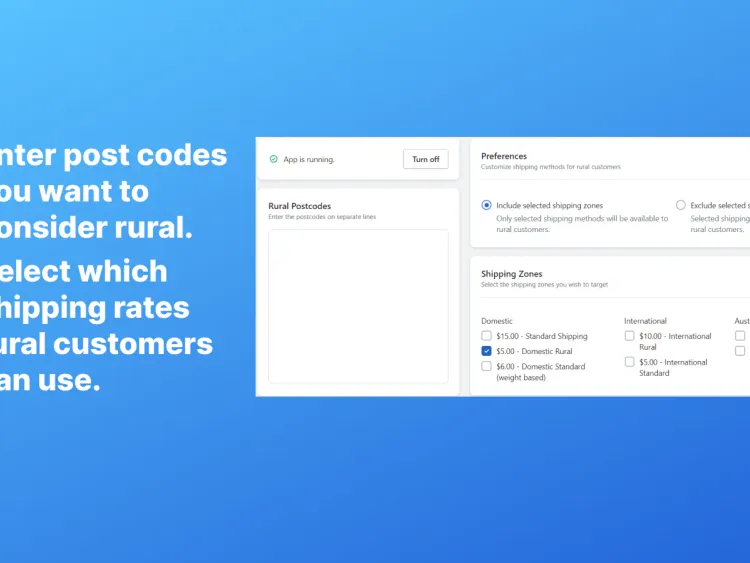
The 5 Most Important Steps to Designing a Chatbot
Your Chatbot’s Value Proposition
Before you start building your chatbot you have to understand why you’re making it in the first place, what is its purpose?
Does your chatbot address a customer pain point, like support for a product, or will it help them pick out the perfect product from your boutique shoe shop? You need to know from the beginning the value that your chatbot provides for your users, and how it will give that value.
Ask yourself not only what value your chatbot should be providing to your customers, but also what value it’s going to provide to you. Will it help to automate your support tickets, or will it generate leads for your business? Understanding in depth the reason why your chatbot exists will help to shape the rest of your chatbot’s design so you don’t lose focus on the end goal.
How People Will Interact with Your Chatbot
How will your chatbot interact with your users? Can they type whatever they want, or will they have to use a persistent menu?
The 3 types of interactions people will have with your chatbot are:
Logistics Phrases
These are the expected phrases that are related to the functional purpose of the chatbot and its value proposition. Logistics phrases are freely typed by users and the chatbot will have to be ready to accept and interpret these messages correctly. For example, if your chatbot is for a bike shop, a logistics phrase would be “What new bikes do you have in store?” where the chatbot will respond with your store’s latest stock. When most people think of chatbots, they think of the ability to freely send messages like logistical phrases for the chatbot to correctly respond to. The downside of this is it can be a lot of work to implement this because you have to anticipate what your users will ask and set up a corresponding response.
Conversational Phrases
Like logistics phrases, conversational phrases are picked up in the messages that your users freely send to your chatbot. The difference is instead of being critical phrases that relate to your chatbot’s core purpose, these are instead casual conversation pieces that are meant to give your chatbot a more human element by responding to them appropriately. For example, a conversational phrase could be “How’s the weather today?” or “How are you going?”. These don’t necessarily add functional value to your chatbot, but they do make the relationship between your chatbot and users more personal, engaging and authentic.
Chatbot Menu
A chatbot menu isn’t quite like the other two inputs; instead of coming through a message, users select the next input from a pre-defined menu. This can either be done with a menu unique to the latest message from the chatbot that flows the conversation along or a persistent menu that can be accessed at any time. Using a chatbot menu is easier to set up than relying on key phrases because it will follow a strict flow of events making it easier to anticipate the potential actions a user can do and less corresponding responses to create. This disadvantage of only using a menu though is that it is a lot less engaging than giving your users the ability to freely message your chatbot with anything they want.
Your Chatbot’s Personality
How will your chatbot introduce itself to your users? Your chatbot’s introduction is a big part of what will determine if your user continues to talk to your chatbot or leave it for good.
Will your chatbot make it clear it’s a chatbot in your introduction? This could turn some people away but it’s a good idea to make it clear early, so people don’t find out and get angry about it later.
What about a name, will your chatbot have one? Some people give their chatbot’s human names or pet names while some do not name their chatbots at all or refer to them as simply the business name. Your chatbot’s name is typically an extension and precedence for it’s personality, so choose something that fits.
What kind of tone will your chatbot use? Will it be serious and factual or light hearted? Nailing your tone is important because it affects how easy or how hard it is for people to engage with your chatbot effectively.
Knowing your audience/customer persona is a great way to develop your chatbot’s personality as you can build it to engage best with your ideal audience. If your ideal audience is teenagers, they would have a very different disposition than corporate workers in their forties. Go with a personality that suits your audience best.
Your Chatbot’s Fall-Backs and Default Messages
Unexpected messages have to be handled effectively. If you don’t set up a good method for handling unexpected messages the engagement between your chatbot and the user will shatter very quickly. Up until then it probably felt sophisticated and easy to communicate with, and now all of the sudden you run the risk of them just treating it as a “stupid bot” that comes across as impersonal and unauthentic.
As we covered earlier, a welcome message is critical to setting the tone for your chatbot. Make sure it’s clear and sets a precedence for the tone of the conversation and functional purpose of the chatbot.
What will you do if your user asks to speak with a “real person”, will you pass the chat onto an actual human or set up some other way to handle the situation? How will you handle the transfer from an automated chatbot to a person who know has to get up to speed with what’s going on?
Monitor, Analyse and Repeat
Designing your chatbot isn’t over after it’s up and running. Over time you’ll encounter where the gaps are in your chatbot, whether that be a flow of events you didn’t expect or common messages you didn’t anticipate. To make the most out of your chatbot you’ve got to keep on going back to it and identifying what it’s doing well, what it could do better and what it is missing.


